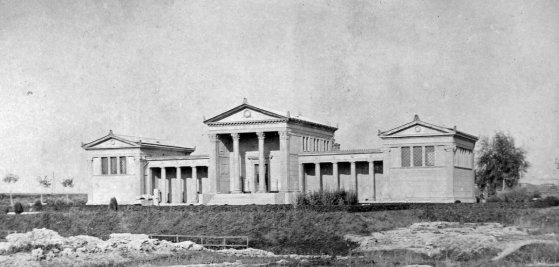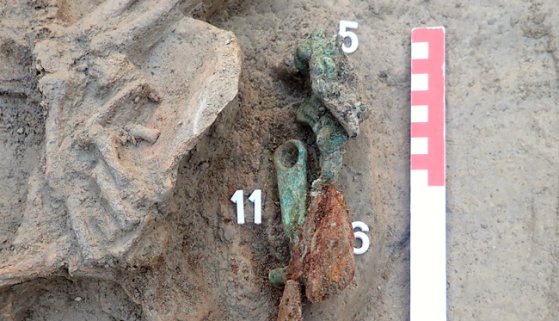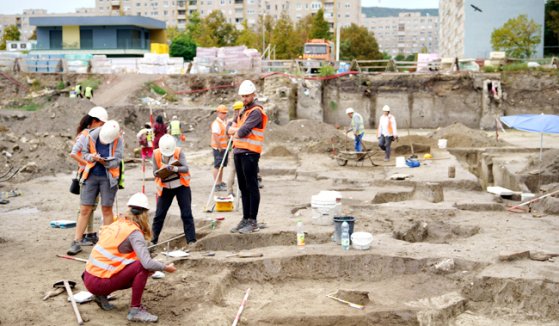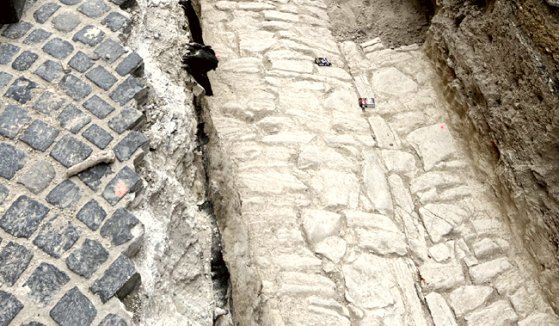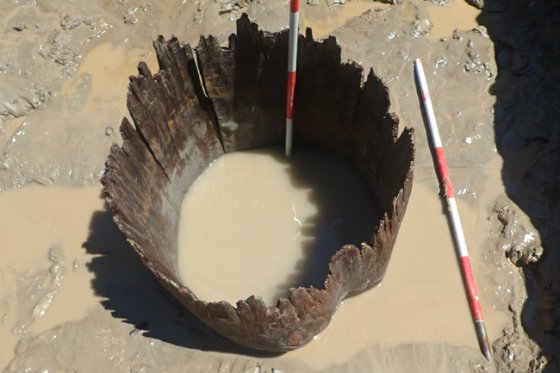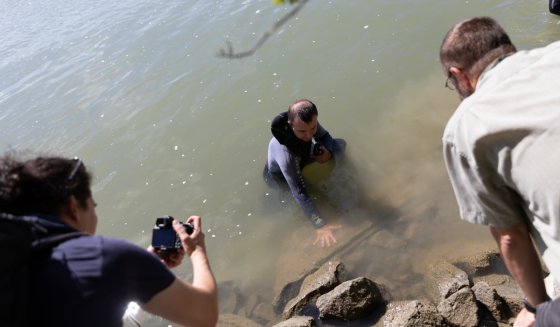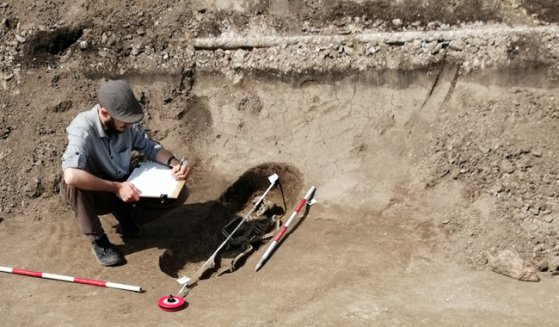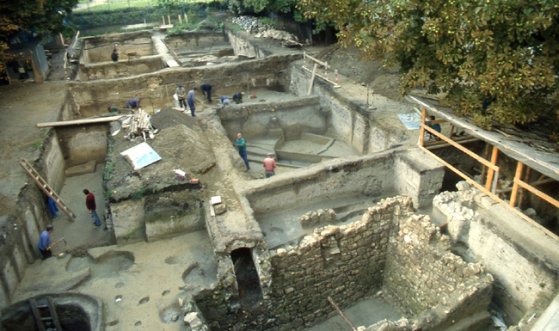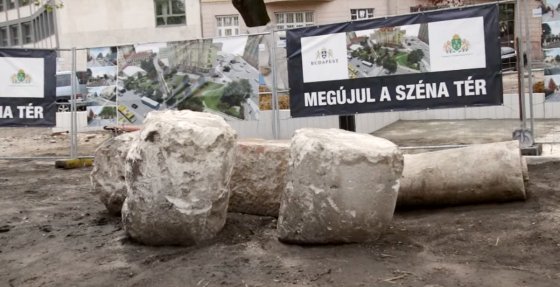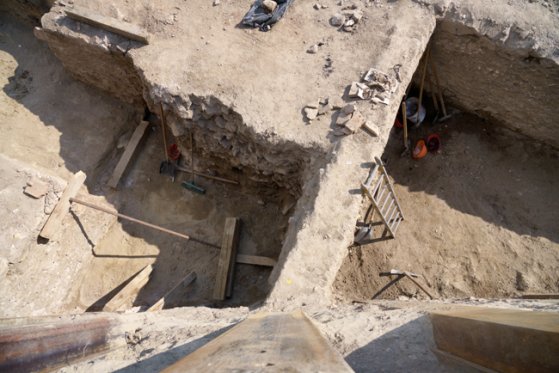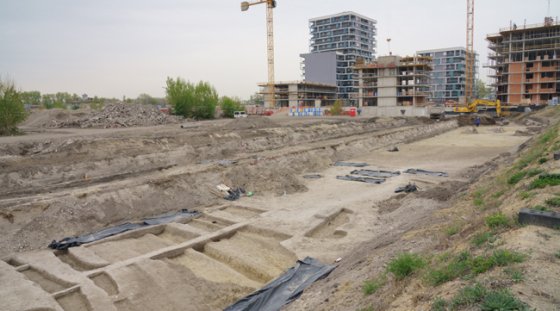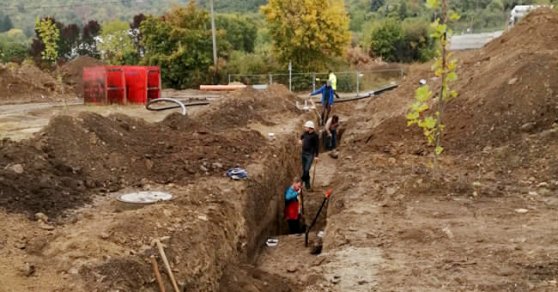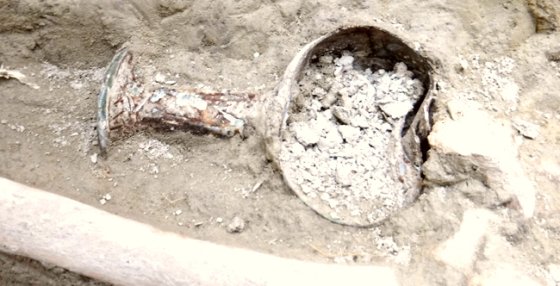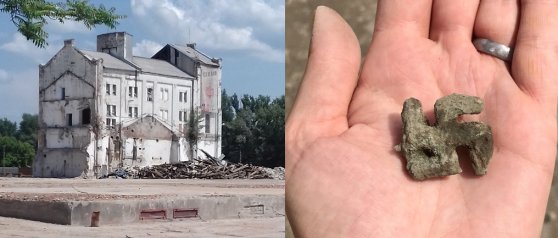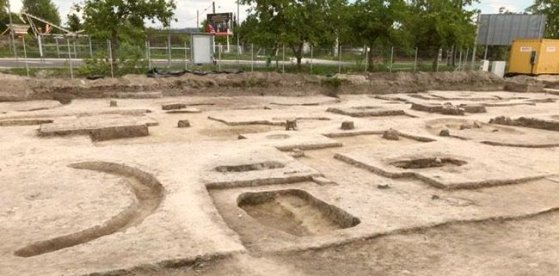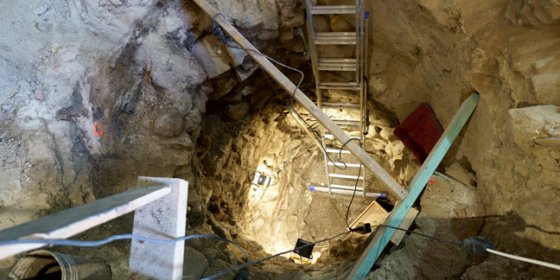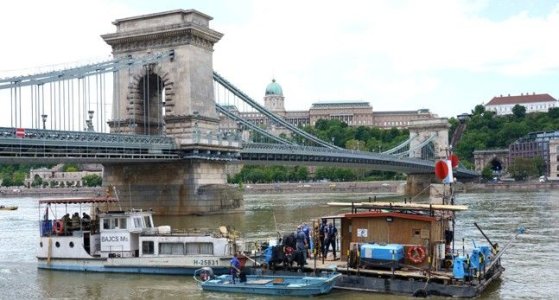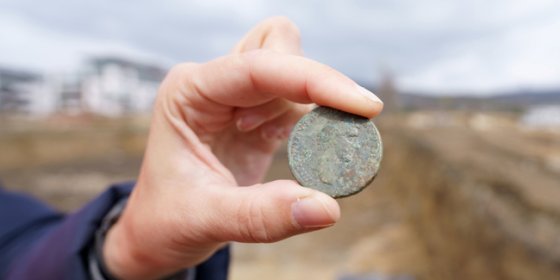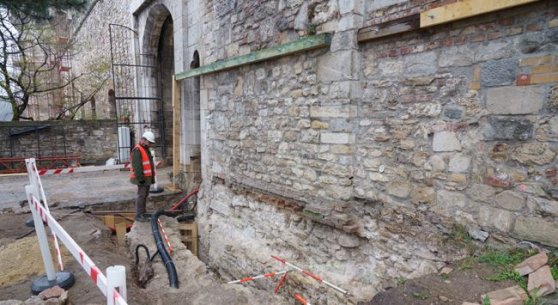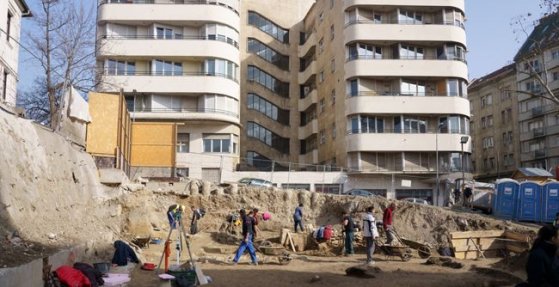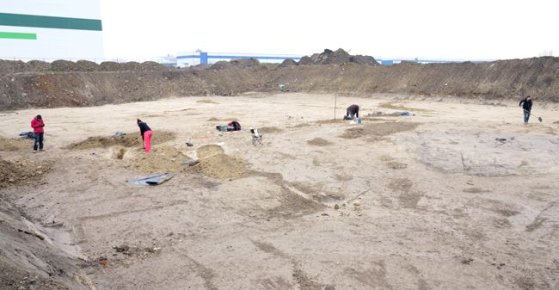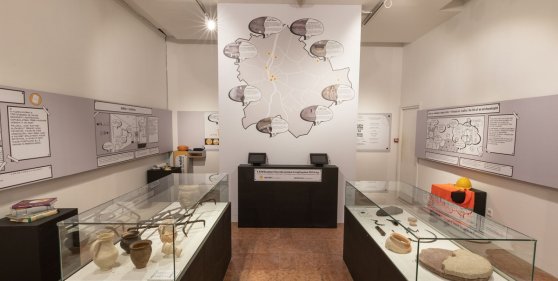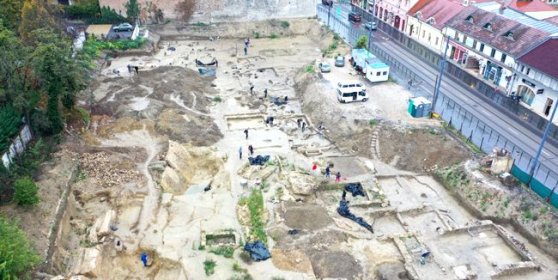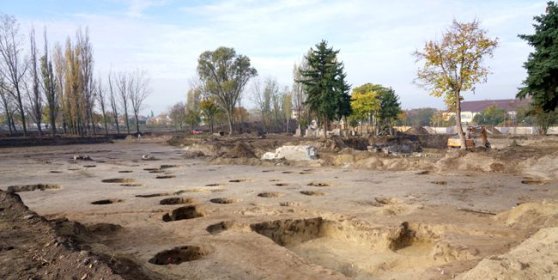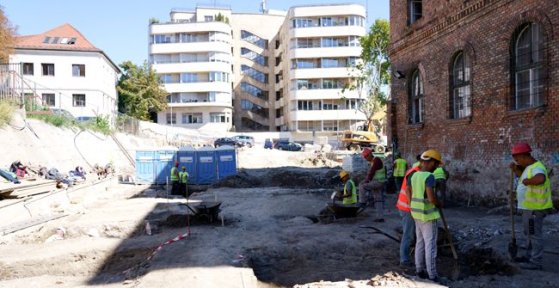 The „intertwined history” of the bridges and the city of Budapest
Which ideas and events have shaped the fate of bridges of Budapest and the cityscape? Alongside many other interesting facts, this question is also answered this newly published book by the Budapest City Archives, which introduces the history of bridges in Budapest.
The „intertwined history” of the bridges and the city of Budapest
Which ideas and events have shaped the fate of bridges of Budapest and the cityscape? Alongside many other interesting facts, this question is also answered this newly published book by the Budapest City Archives, which introduces the history of bridges in Budapest.
Budapest History Museum
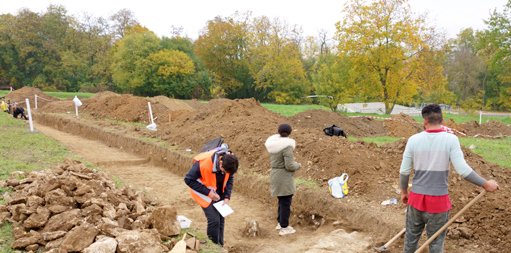 Archaeologists have researched a Roman villa built in the 4th century, from the last period of Aquincum
Archaeologists have researched a Roman villa built in the 4th century, from the last period of Aquincum
November 13, 2022 at 10:00 AM
Archaeologists have been researching a Roman-era villa and its surroundings in the 3rd District in Harsánylejtő in recent weeks. The building was built in the last period of the ancient Aquincum, in the 4th century. According to experts, the majority of the inhabitants of the civilian city had already moved into the walls of the military city, and the former villa area of Aquincum was inhabited by soldiers or nobles who could pay for military protection.
They collected memories of old times - Budapest founded a museum 135 years ago
October 20, 2022 at 3:00 PM
Budapest's position as the capital provides many advantages but sometimes it also comes with disadvantages. This was also the case in the area of museums: because the Hungarian National Museum was established here in 1807, the capital was able to establish its own institution only eighty years later - after many rural settlements. However, on 20 October 1887 - exactly 135 years ago - the decision was finally made and the Capital Museum was established.
Archaeologists have found a previously unknown site at the border of Csillaghegy
October 20, 2022 at 12:30 PM
Archaeologists came across special finds in the 3rd District, in Pünkösdfürdő Street: prehistoric-, Roman-, migration- and Avar-era monuments were found in the same place. A 6th-7th-century grave was found here, in which the buried woman had a string of glass beads around her neck, a bronze ring on her temple, and a bronze ring on her right hand. Other valuable objects of use were also found on the site from several periods.
A drainage ditch system of Bronze Age origin was found in the area of Buszesz in Óbuda
October 3, 2022 at 6:30 PM
During the archaeological excavation in the area of the former distillery, Buszesz, a drainage protection structure of prehistoric origin was identified under the Roman layers in Óbuda. The ditch system ensured flood protection. Pile holes, storage and waste pits belonging to former buildings were also found.
Archaeologists have found the road of the Buda Castle from Sigismund-era
September 2, 2022 at 6:00 PM
A large section of a road from the time of Sigismund of Luxembourg, dating from the beginning of the 15th century, was excavated by the staff of the Budapest History Museum at the Buda Castle, in the area below the Savoy Terrace. Medieval and early modern layers can also be observed on the excavated road section.
Archaeologists found a 7,000-year-old wood-lined well at Budafoki road
August 12, 2022 at 5:00 PM
During the excavation at Budafoki road in the 11th district, the archaeologists uncovered a seven-thousand-year-old well, which was created from the hollowed-out trunk of a large tree. Previously, details of a Neolithic and an Árpád-era settlement came to light in the area.
Archaeologists were able to find the remains of a monastery founded by Béla the 4th at Háros Island
July 15, 2022 at 2:00 PM
The remains of the Premontre monastery founded in 1264 were found by diver archaeologists along Háros Island. The monastery was built during the time of Béla the 4th and was destroyed during the Turkish era. The supposed location of the building was previously searched by several archaeologists. Many carved stones of medieval origin were found in the debris field, including blocks of blocks and fragments of window frames, but more recent finds were also found.
Archaeologists found an Árpád-era cemetery next to Budafoki road
June 30, 2022 at 4:00 PM
The excavations took place from April to June along the Budafoki road, north of the Kondorosi road, one of the surprises of the excavation was the discovery of an Árpád-era cemetery. Traces of the residential buildings of a settlement more than seven thousand years ago were also found in the area.
The archaeologists found a village in the city center from the 13th century, and the excavation is now continuing
June 25, 2022 at 3:00 PM
Archaeologists last worked 25 years ago in the courtyard of the downtown Károlyi Palace, under 16 Károlyi street, on the site of the home of the Petőfi Literary Museum. At that time, among other things, an 11th-12th century cemetery, 23 graves, a 13th century village and the stone cellar and food storage of a Turkish house were excavated. Excavations are now continuing again.
The columns of the old St. John's Hospital are on display in Széna Square
June 11, 2022 at 5:30 PM
Pieces of the column of the old St. John's Hospital, remains of a wall and a fragment of the support column of the statue of St. John of Nepomuk were found during the renovation in Széna Square. The relics will be exhibited in the renovated square.
A medieval cellar was found on the outskirts of Budapest
May 10, 2022 at 2:00 PM
On the border of Budakalász and the Barát stream, in addition to several prehistoric finds, the remains of a medieval cellar have also been found. The cellar may have belonged to the medieval village of Kissing, and probably dates back to the 13th century.
Archaeologists may have found a medieval cemetery in the 11th district
April 28, 2022 at 2:00 PM
Among the prehistoric traces, the staff of the Budapest History Museum presumably found medieval burials next to Budafoki street in Újbuda. Traces of Stone Age finds and buildings have been found in the area before, now the former cemetery of the village of Kocsola, which was destroyed in the Middle Ages, has probably been found.
Traces of a seven-thousand-year-old village were found in the 11th district
November 9, 2021 at 2:30 PM
Archaeologists excavated the remains of a seven thousand years old settlement in the 11th district on Madárhegy. Fragments of mainly pottery and animal bones left behind by Stone Age people were found in the pits.
We can learn about the history of the Buda Castle in the renewed exhibition of the Castle Museum
October 14, 2021 at 9:00 PM
A number of recently discovered works of art, building elements, photographs and other documents are presented in the renewed permanent exhibition in the Castle Museum, which reviews the modern history of the Buda Castle. A 3D reconstruction of the three eras of the palace can be seen: the animations evoke the states created by the medieval, Baroque and Haussmannian expansions. A new temporary exhibition on the relocation of sculptures during the change of regime "Can Ostapenko stay?" can also be seen.
Roman burials were excavated in Óbuda
August 27, 2021 at 2:30 PM
Experts from the Budapest History Museum found a late Roman burial on one of the plots on Óbuda Street, where the remains of a stone wall and storage pits have also been found.
An ancient swastika was found on the grounds of Buszesz
August 3, 2021 at 5:00 PM
The excavation work has entered a new stage in the area of the former distillery in Óbuda, the archaeologists of the Budapest History Museum found Roman coins, a crescent-shaped military mounting made of bronze, and a bronze clothespin depicting a swastika.
Unknown Roman cemetery found in Nagytétény, near the former Campona fortress
June 18, 2021 at 4:00 PM
The Campona Fortress included a recently excavated Roman cemetery, which archaeologists found in Nagytétény during the preparation of a development project. The staff of the Budapest History Museum identified almost sixty graves; coins, pots, vials, and a ceramic candle were also found.
Intact utensils found in a medieval well excavated under the National Guard Headquarters
June 12, 2021 at 3:30 PM
The everyday life of the former inhabitants of Buda Castle can be studied through the objects, especially the ceramic jugs and glasses, which were found during archaeological research in the area of Dísz Square – Szent György Square, on the basement level of the Honvéd ('national guard') Headquarters. Most of the finds were hidden in the depths of an identified well.
Cannonballs found in the Danube near Chain Bridge
May 29, 2021 at 12:00 AM
Archaeologists have found two medieval carved stone cannonballs in the Danube riverbed. One is so huge that they were unable to bring it to the surface. The projectiles may be from the late Middle Ages. Many other valuable archaeological finds have also been unearthed.
Coins and metal works from the Hungarian conquest of the Carpathian Basin found on construction site
May 15, 2021 at 4:00 PM
An excavation is taking place in the 11th District on Rupp Hill. Archaeologists are reviewing the area before construction. Although the site is mainly Roman, valuable objects from other eras have been found; such as medieval coins, metal works from the Hungarian conquest of the Carpathian Basin and the foundations of a building from the 2nd or 3rd century.
Artefacts found at 14th century castle wall
May 3, 2021 at 2:00 PM
The finds from the Anjou or Sigismund-era constructions were found near the castle walls of the Royal Palace of Buda Castle, in the New World Garden. Staff from the Budapest History Museum completed the excavations. The finds are of particular importance because little is known about the Anjou-era parts of the palace.
The story of four hundred graves – Archaeological excavation on Margit Boulevard comes to an end
March 5, 2021 at 6:00 PM
The excavation on a plot at the corner of Margit Boulevard and Rómer Flóris Street has been completed. Archaeologists uncovered many Bronze Age and Roman items and artefacts from the Ottoman Period, as well as four hundred graves.
Archaeologists unearth early Bronze Age tombs in Csepel – Finds reveal scattered ash burials
February 6, 2021 at 4:30 PM
Archaeological excavations within the Csepel Freeport have uncovered artefacts from the Early Bronze Age. Although the material of the prehistoric pits is still being studied, the site of scattered ash-rite burials dating back to the Early Bronze Age is especially of note. Excavations have revealed ten vessels, making it clear that Csepel has been inhabited since prehistoric times.
New exhibition about the Middle Ages opens in the Castle Museum
January 17, 2021 at 5:00 PM
The Vármúzeum ('Castle Museum') of the Budapest History Museum has created the fifth exhibition that places the finds of mediaeval archaeology from the past year in the spotlight. While the physical exhibition does exist. Currently, visits are limited to virtual tours.
Exciting artefacts found in cemetery of Roman military encampment
December 21, 2020 at 2:00 PM
Bird rattles, curse tablets, glass jars and jewellery have been unearthed during at an excavation in Óbuda, near Bécsi Road, in the cemetery of the Roman-era Military town of Aquincum.
Archaeologists uncover Sarmatian ruins in Zugló
November 28, 2020 at 2:00 PM
A Sarmatian settlement from the 2nd–3rd centuries is being excavated near Rákos Stream in the 14th District. Dugout homes, water pits, roman ceramic, glass and metal artefacts have been found.
Graves from the Ottman-era and medieval walls found on Margit Boulevard
September 21, 2020 at 6:00 PM
A cemetery from the Ottoman-era has been found during excavation under 19–21 Margit Boulevard. Archaeologists are now searching for the walls of the houses of Felhévíz.
More articles
 The „intertwined history” of the bridges and the city of Budapest
Which ideas and events have shaped the fate of bridges of Budapest and the cityscape? Alongside many other interesting facts, this question is also answered this newly published book by the Budapest City Archives, which introduces the history of bridges in Budapest.
The „intertwined history” of the bridges and the city of Budapest
Which ideas and events have shaped the fate of bridges of Budapest and the cityscape? Alongside many other interesting facts, this question is also answered this newly published book by the Budapest City Archives, which introduces the history of bridges in Budapest.
 The Bridge Report, which brought a turning point in the history of Budapest
A travel report that changed the history of Pest and Buda, as well as Hungary. The little book contributed to the change of half a thousand years of legal customs and the implementation of an investment of unprecedented size and technical quality. This book was The Bridge Report [Hídjelentés in Hungarian].
The Bridge Report, which brought a turning point in the history of Budapest
A travel report that changed the history of Pest and Buda, as well as Hungary. The little book contributed to the change of half a thousand years of legal customs and the implementation of an investment of unprecedented size and technical quality. This book was The Bridge Report [Hídjelentés in Hungarian].
 Drama on the university wall - The heroic monument was planned 95 years ago
In the constant hustle and bustle of the Egyetem Square in Pest, the students may not even notice the monument that decorates the short section of wall between the church and the central building of ELTE. However, it commemorates their predecessors, the heroes who fought for their country in World War I, and those who heroically helped them. The first design of the dramatically collapsing soldier was born in 1928, ninety-five years ago.
Drama on the university wall - The heroic monument was planned 95 years ago
In the constant hustle and bustle of the Egyetem Square in Pest, the students may not even notice the monument that decorates the short section of wall between the church and the central building of ELTE. However, it commemorates their predecessors, the heroes who fought for their country in World War I, and those who heroically helped them. The first design of the dramatically collapsing soldier was born in 1928, ninety-five years ago.

